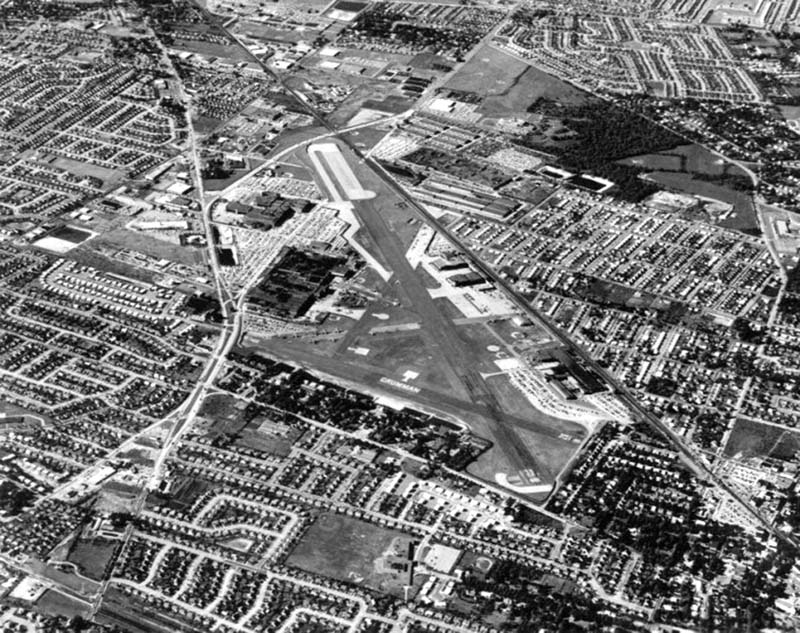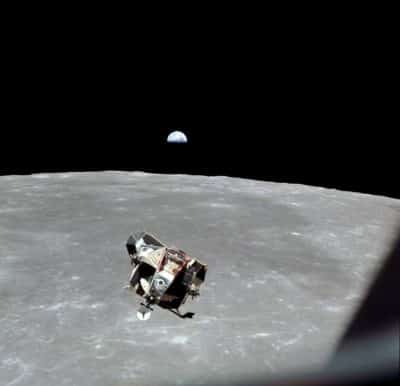
Aviation history and Long Island are one and the same.
In the spring of 1927, when the brazen Charles Lindbergh was set for his historic flight across the Atlantic Ocean to a joyously waiting France, the then-unknown aviator chose Roosevelt Field for take-off. In the wee morning hours of May 20, 1927, the Spirit of St. Louis, Lindbergh’s big bird, took off. An incredible 33 hours later, Lindbergh landed the plane in Paris. Back home, Lindbergh was fêted with a ticker tape parade down Broadway, while retiring later to the legendary MacKay House in Roslyn to digest his achievement.
Flash forward to the early 1960s. The space race is on. In 1957, the Soviet Union shocked an unsuspecting America with the successful launch of Sputnik, the first capsule to be rocketed into outer space. Science fiction was dead. Worse, the United States feared the Russians would rule the heavens and with it, the Earth. The administration of Dwight D. Eisenhower was not committed to a space race with Moscow. Eisenhower’s successor, the idealistic John F. Kennedy declared in 1961 that landing a man on the moon before the end of the decade should be a top priority. In the early ’60s, the nation was flush with money. The project was doable. Kennedy’s assassination in 1963, brought his pledge into sharper focus.
The United States responded to Moscow with the Mercury and Gemini programs. The Apollo missions would fulfill Kennedy’s vision. Cape Canaveral, FL, not little Roosevelt Field, was the takeoff zone. But Long Island once again figured heavily in aeronautic history.
That came in the dedicated engineers and workers at the Grumman Bethpage facility.
Grumman’s contributions were immense. Primary was the design and construction of the Lunar Module, that small landing capsule, outfitted in gold foil, the one that broke away from the main ship and hurtled to the moon, with Neil Armstrong and Buzz Aldrin finding a landing space, touching down and making mankind’s first ever steps on a surface other than Planet Earth. Even the taciturn Walter Cronkite got enthused while on the air. “Man on the moon! Whew boy!” he blurted out. Cronkite’s space expert commentator, astronaut Wally Schirra, wiped away tears of joy. Watching that fragile cabin blast off from the moon was like being in a movie theater. Buck Rogers really did come to life.
The module was only one component of Grumman’s work. These epic moonshots were essentially the product of computer technology guiding mortal man through space (flying skills were a matter of life and death, too). The Bethpage facility provided software for guidance and trajectory control. They figured in communications as well, constructing the black and white camera that was attached to the lunar module, one that captured Armstrong’s historic steps down the ladder and onto the moon’s surface, while saying those unforgettable words, “That’s one small step for a man, one giant leap for mankind.”
Grumman also supplied the antennas that flashed that image and those of Armstrong and Aldrin prancing on the moon all back to the billions watching in amazement on television. Finally, Grumman engineers built the space vehicle recovery parachutes for those always-thrilling splashdowns in the big drink.
For their efforts, Grumman engineers earned an Emmy Award. That seems beside the point. From take off to the moon landing to the moon walk and to the splashdown itself, Grumman was the indispensable force behind Apollo 11. It remains Bethpage’s finest hour.
Those who watched the drama of Apollo 11 can never forget it. The liftoff took place on a clear, sunny day and the rest of the flight went so smoothly that one can scarcely believe that Apollo 11 flight managers considered the moonshot an extremely risky undertaking. The flight team was prepared for total failure, which would have ben witnessed by family members helplessly watching it all on television.

It didn’t happen. Only imagine the memories Grumman employees have of those historic days. Several years ago, some of them shared those sentiments for a nationally televised program on another Apollo 11 anniversary. Here are some examples.
“I would like to go back and have that time again,” recalled Chuck Tanner from the Lunar Module team. “It was a wonderful time. It was the finest group of men and women that you could imagine ever working with.”
“You knew it was going to soar, and then it was going to sink,” added Hal Larkin. “Then when it really happened you just, you were spellbound just like a fairytale come true.”
“All the opportunities it has brought,” said another Grumman man. “Just all of the electronics and the things from computers. And everything you have today, or a lot of it, has come from the Apollo program.”
“You couldn’t believe that this happened, and that you were a part of it,” a still-amazed Dick Jones reflected.
But they were. All of them. All of the ingenious Long Island men and women of the Bethpage Grumman miracle. By the way, ol’ Charlie Lindbergh was still around in 1969. He joined Armstrong, Aldrin and Michael Collins for the emotional celebration with President Nixon at the White House. Things do have a way of coming together.



















